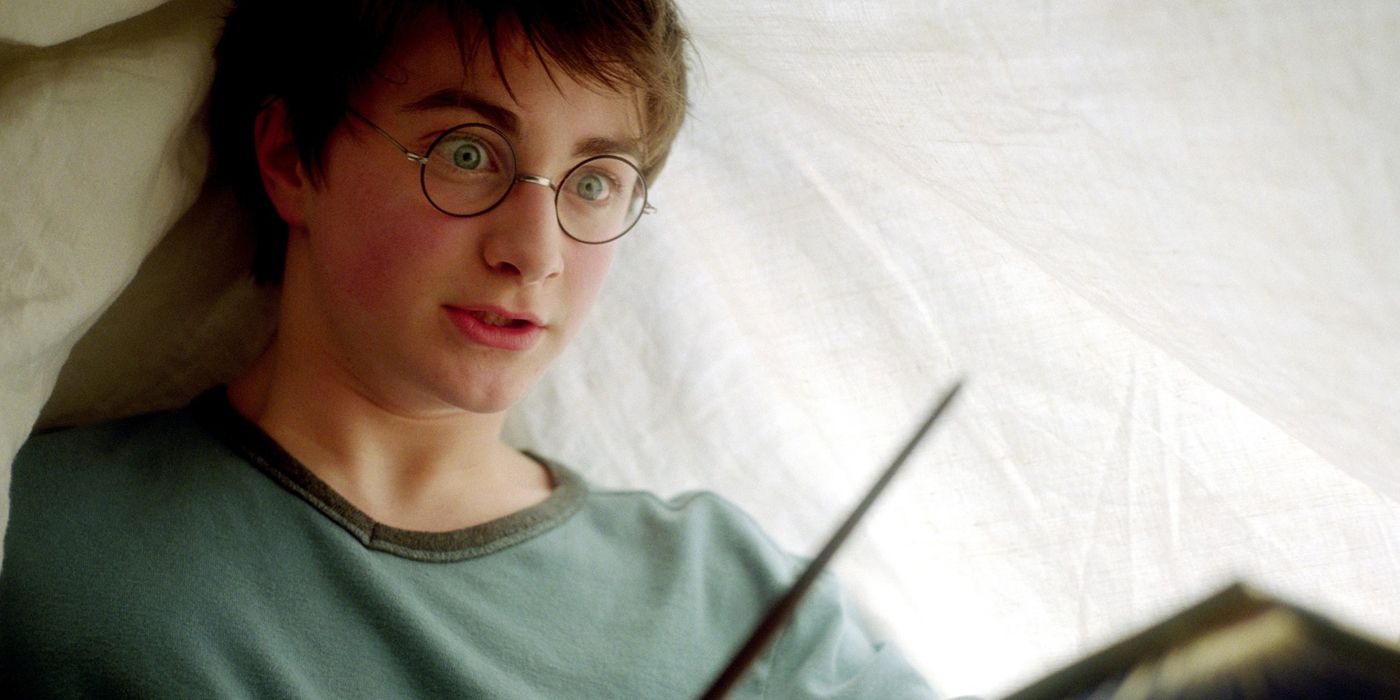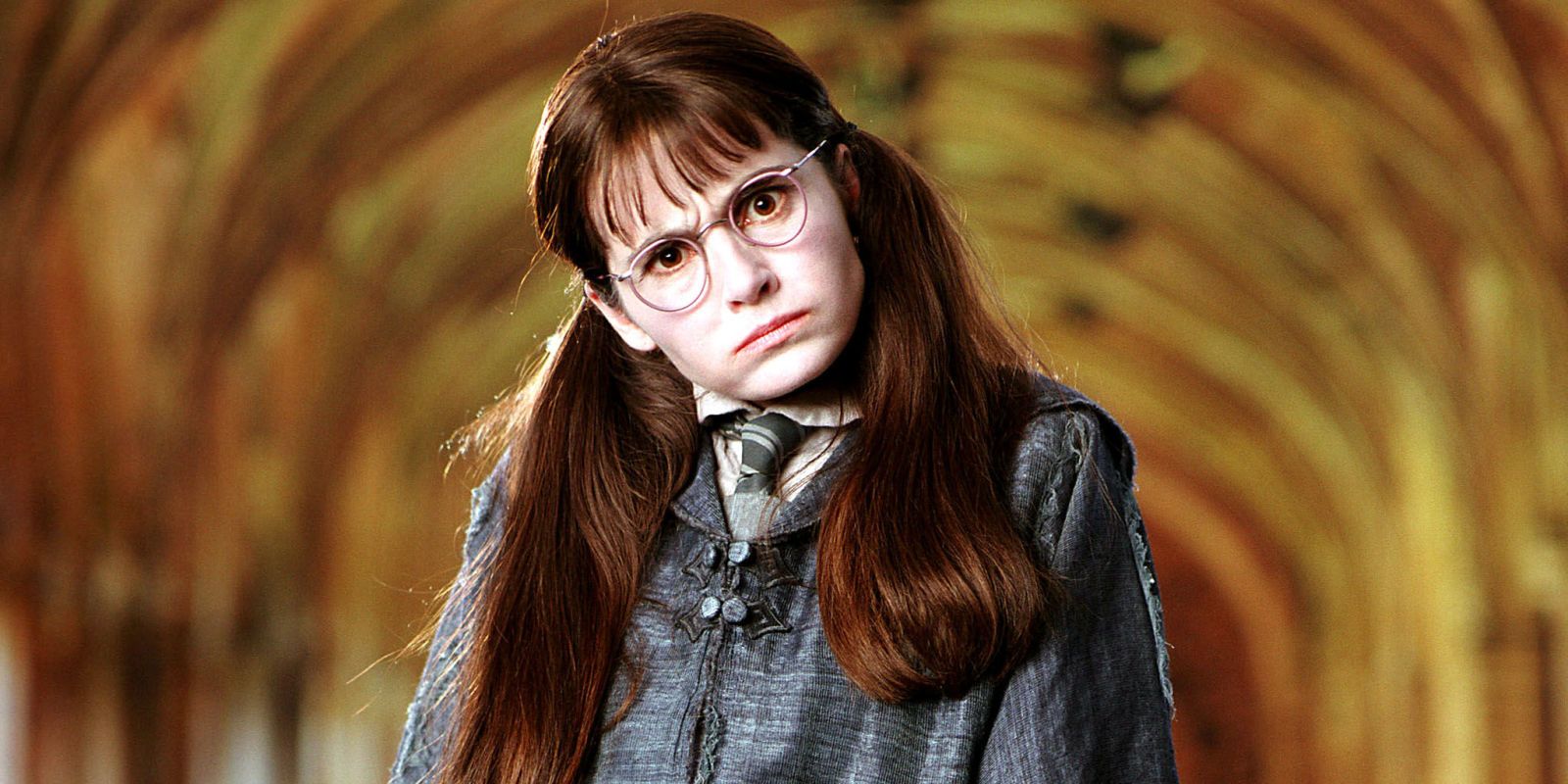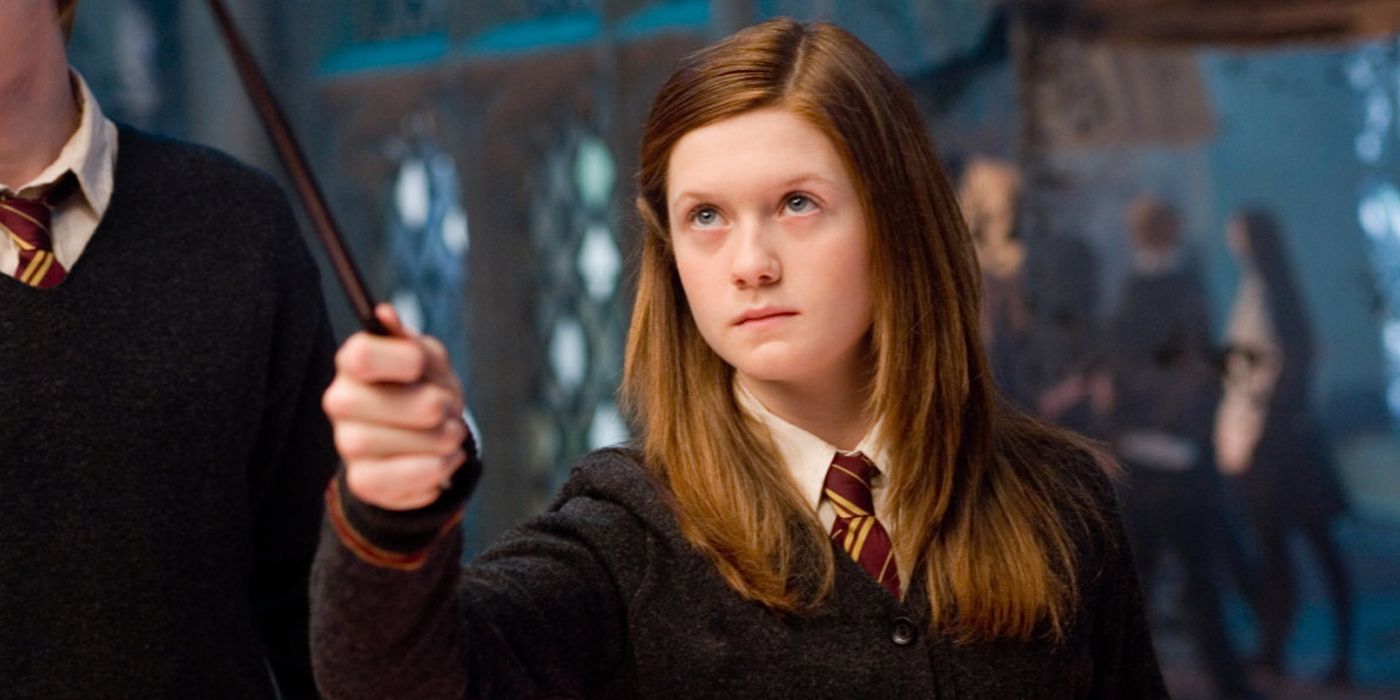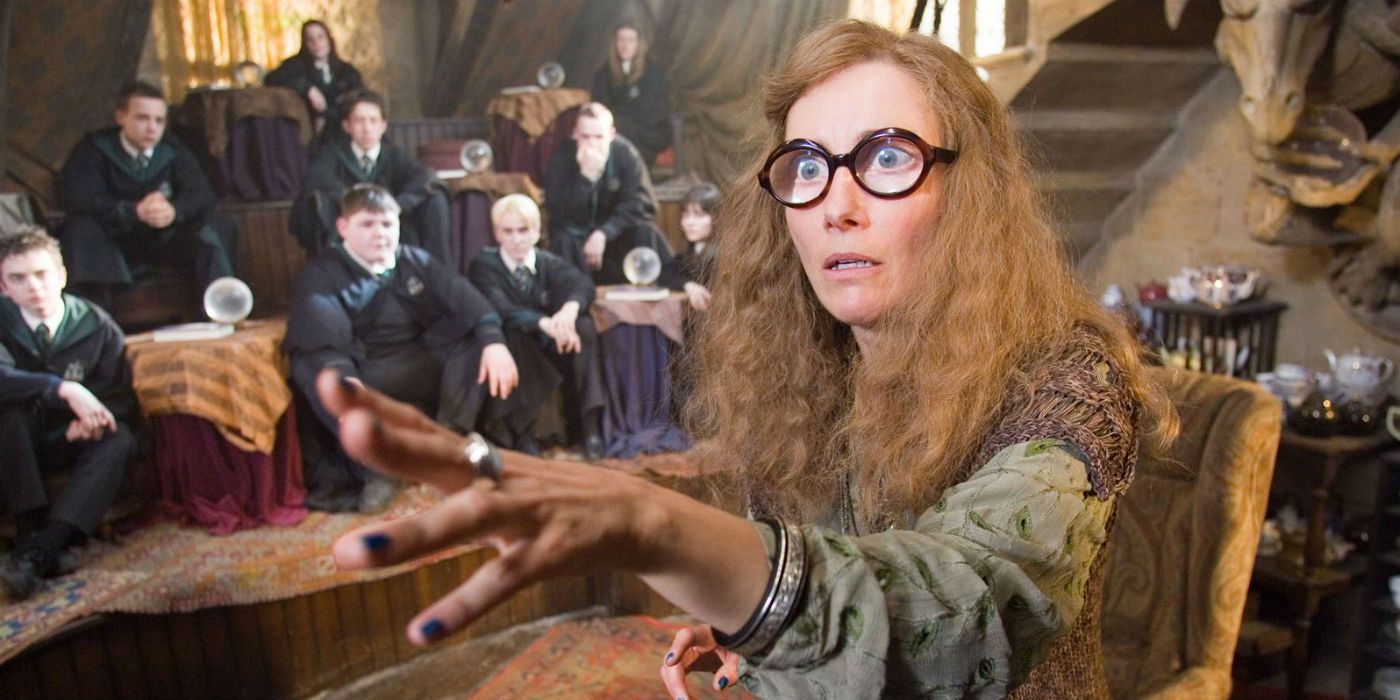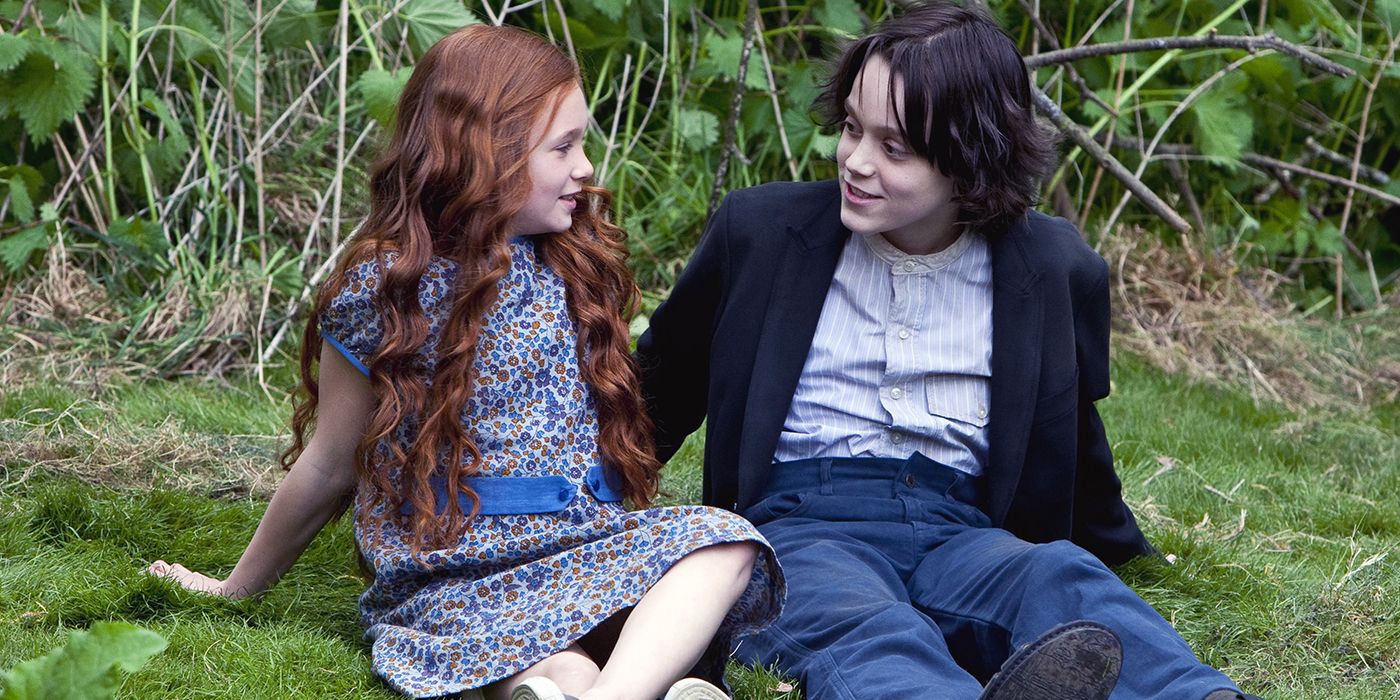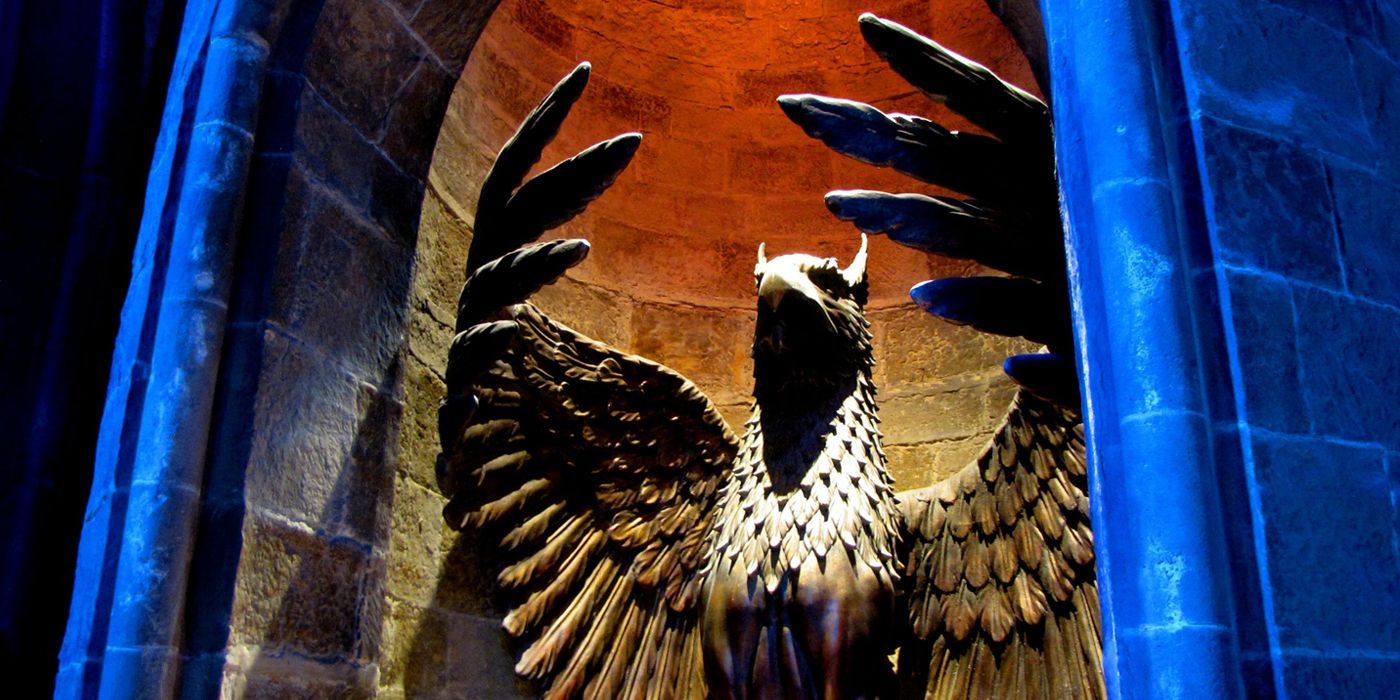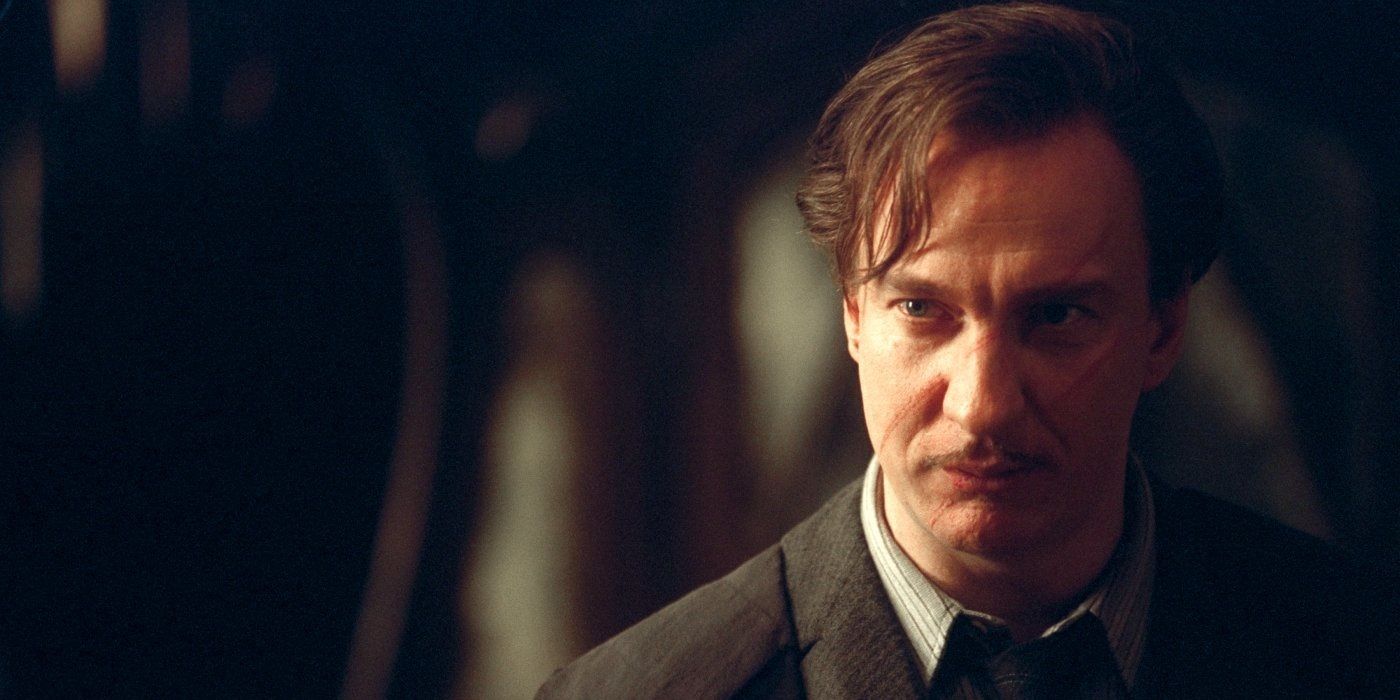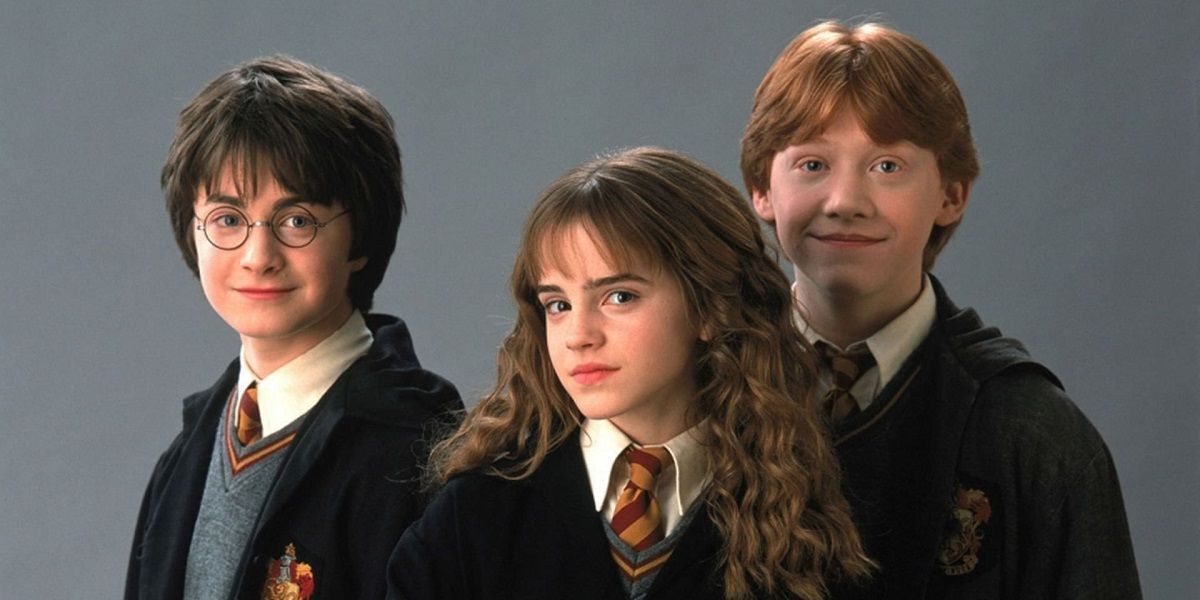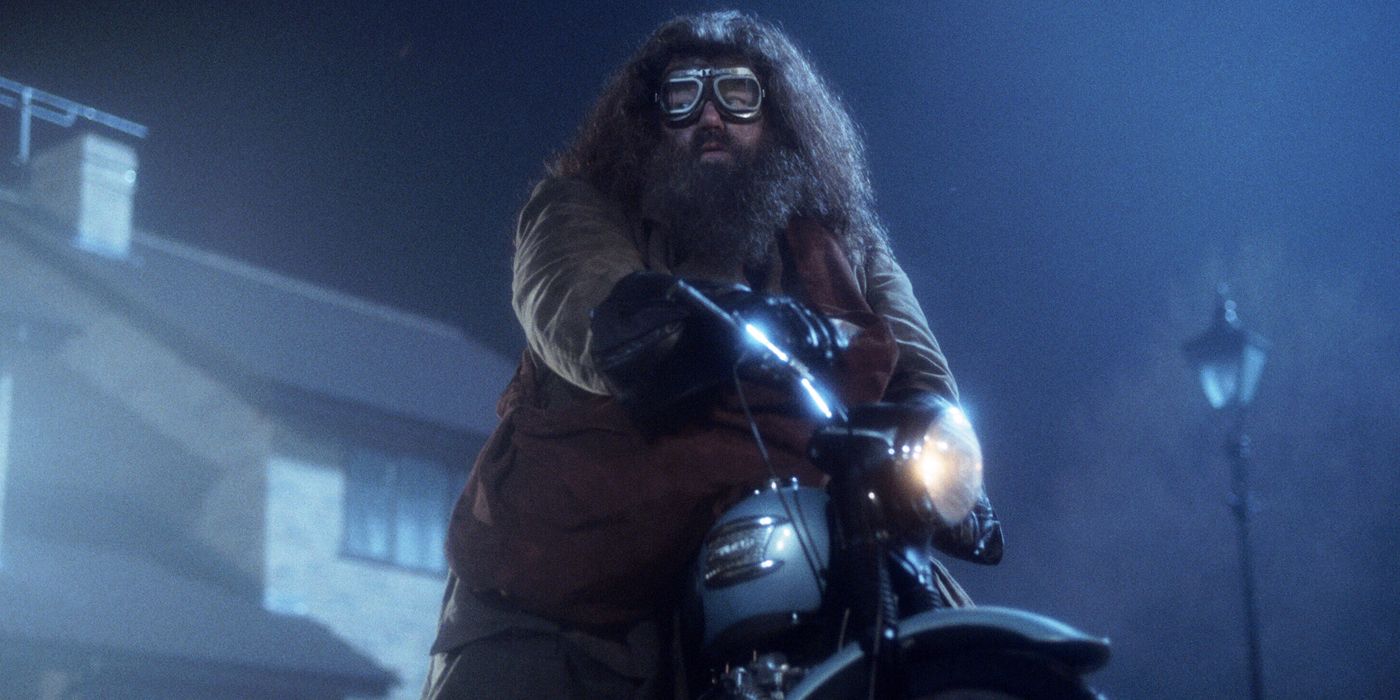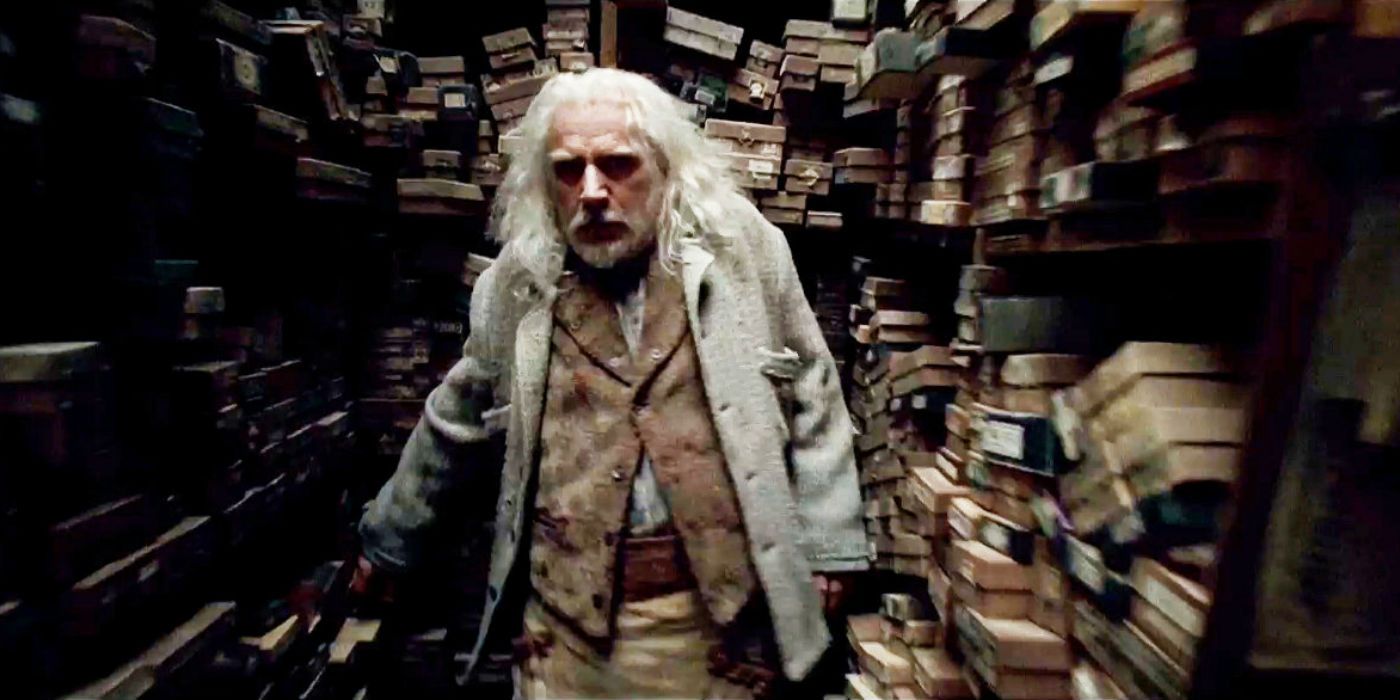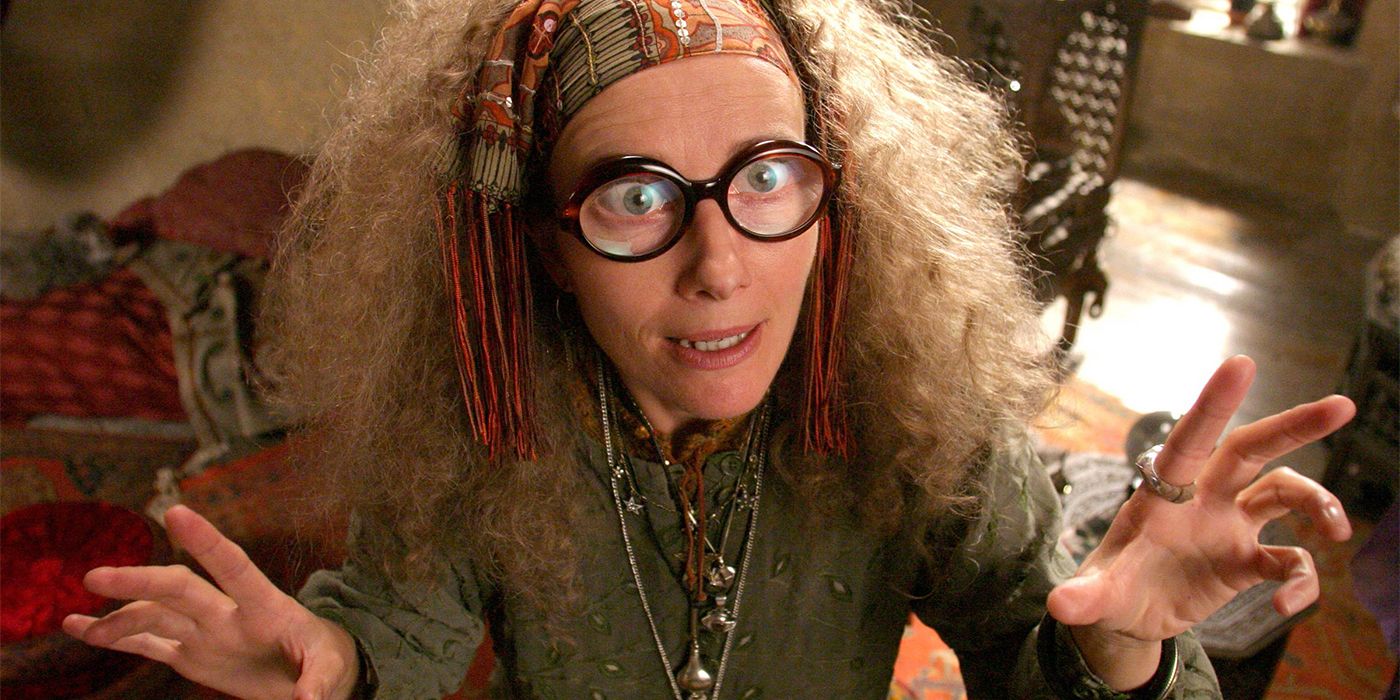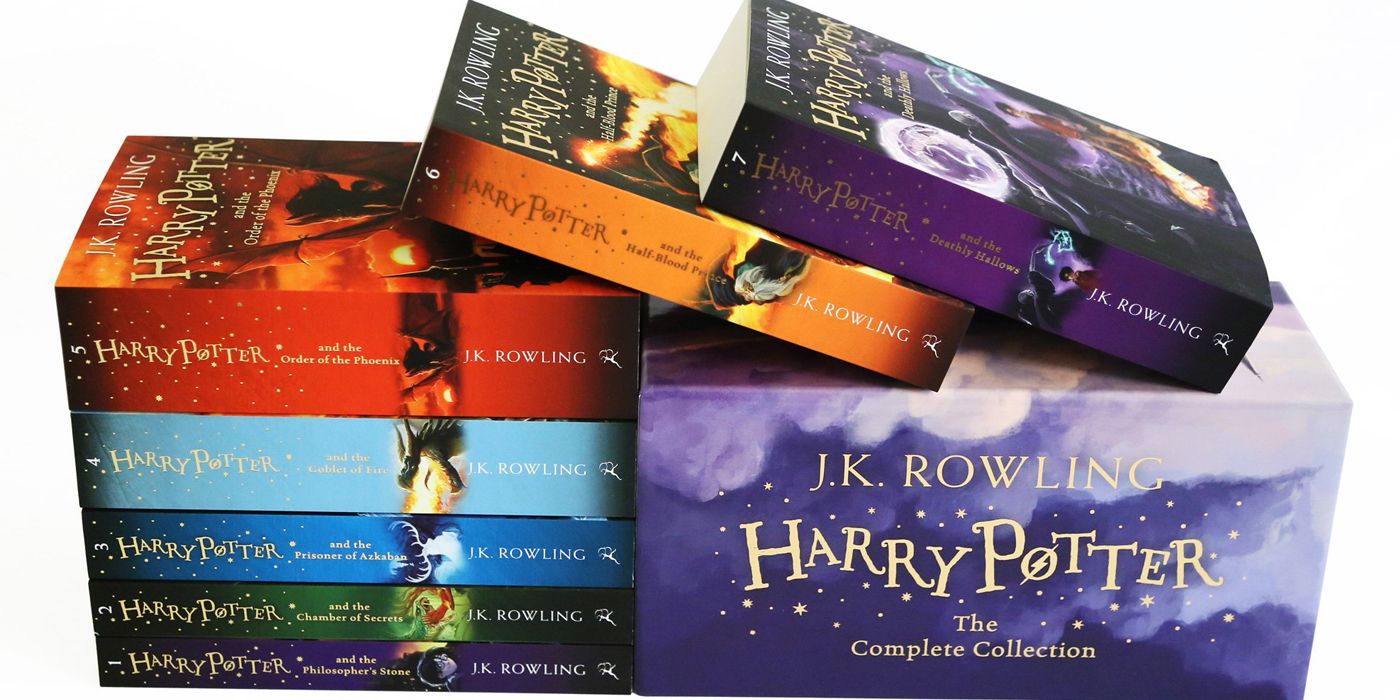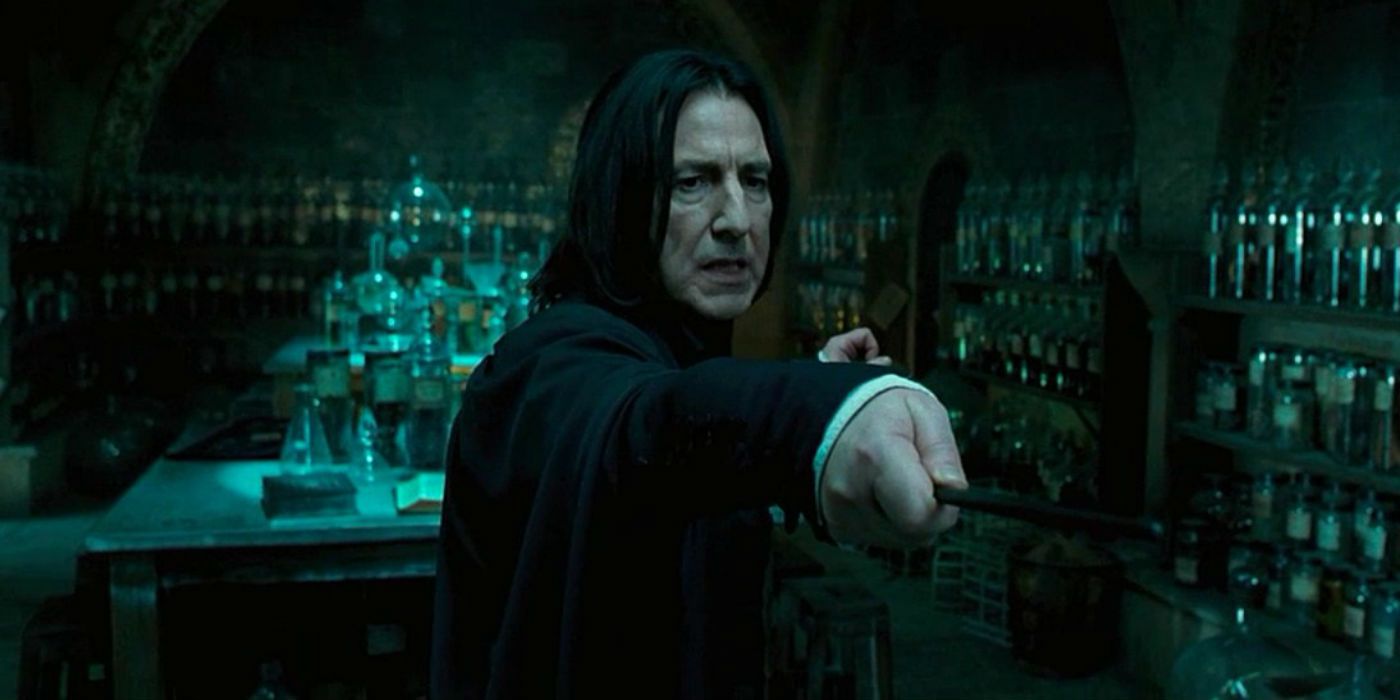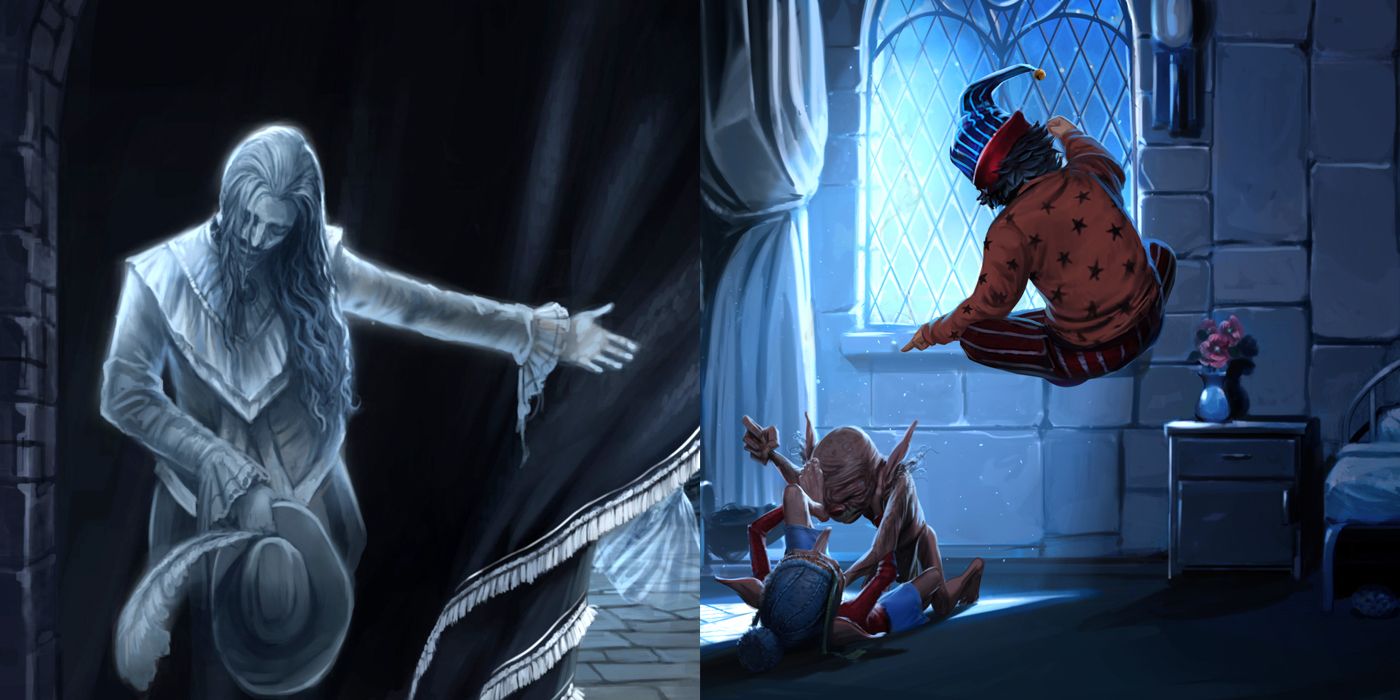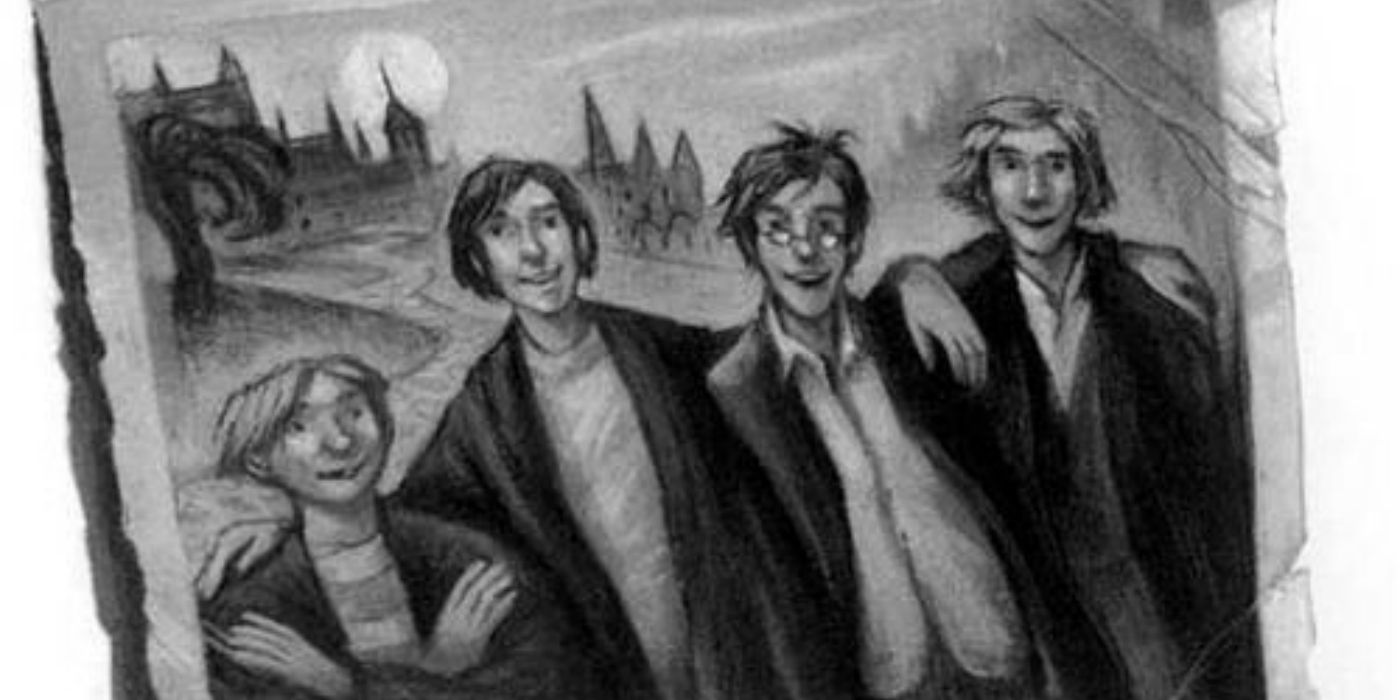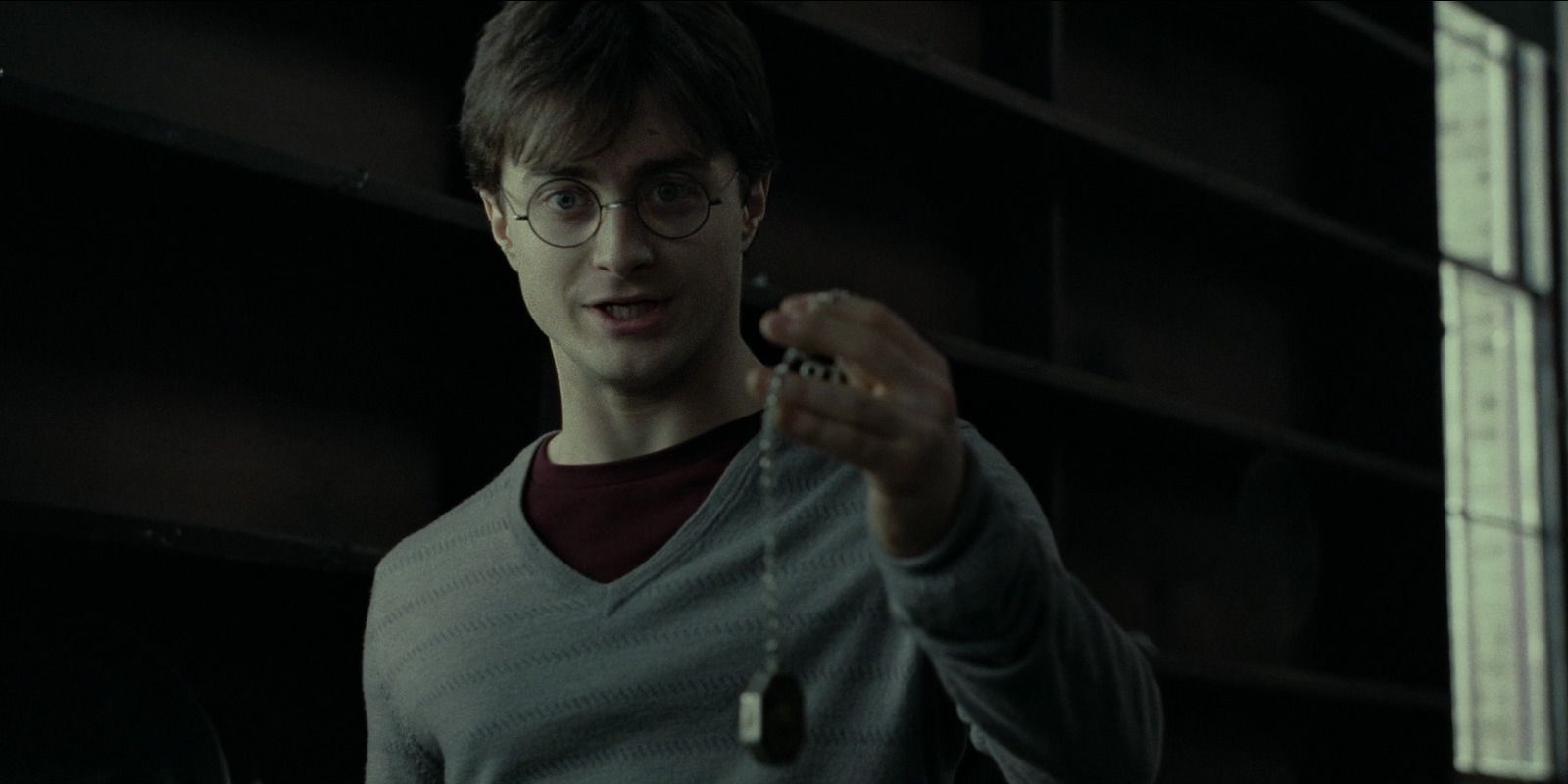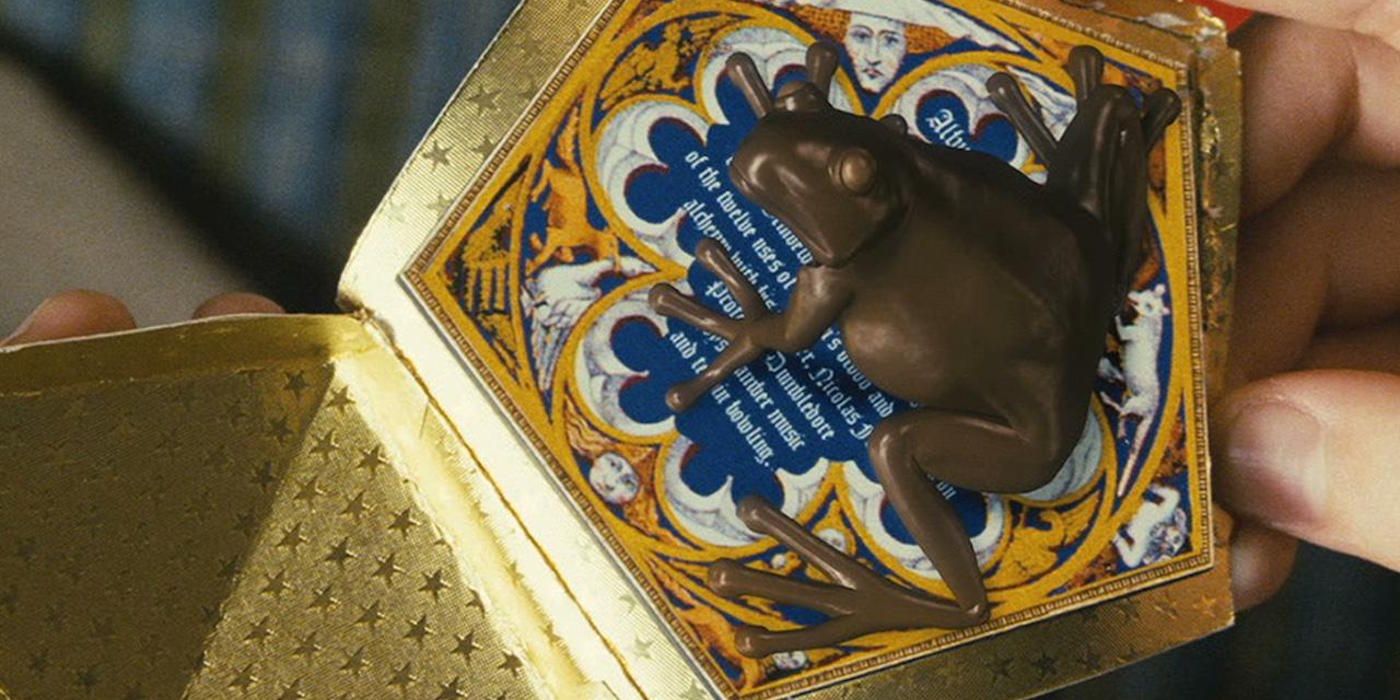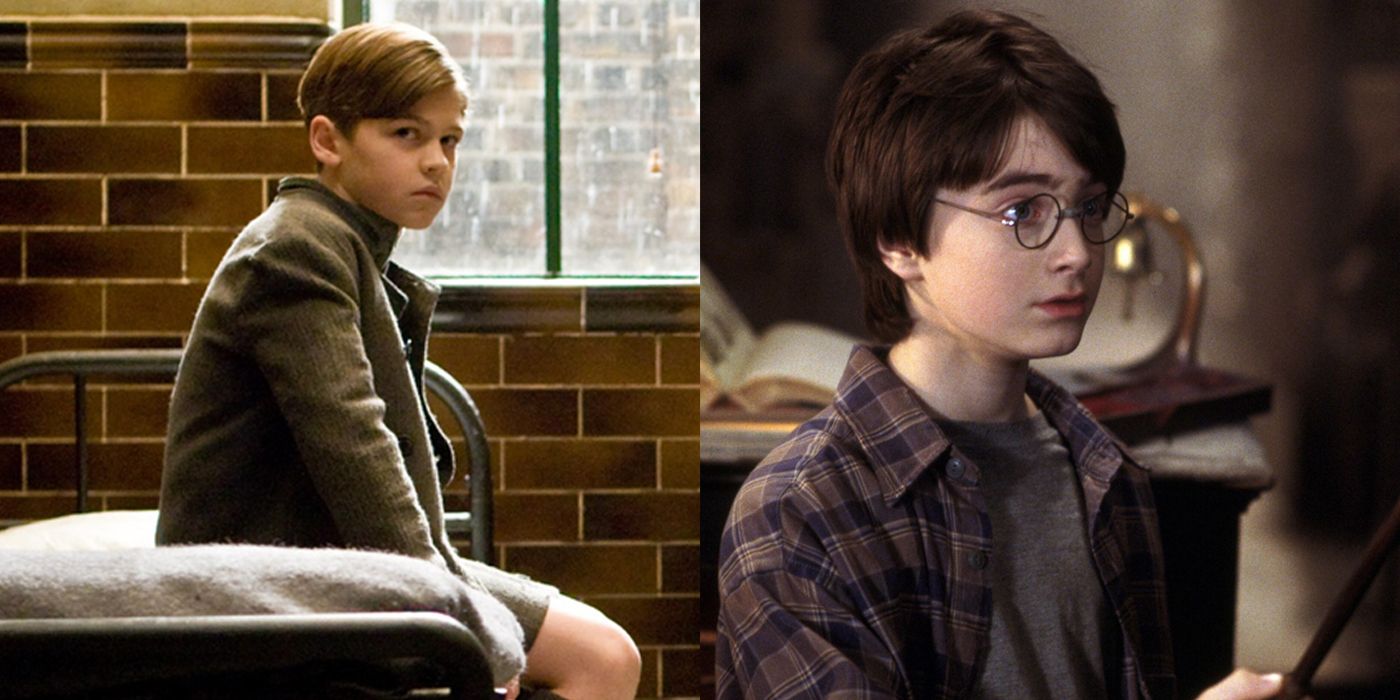It's safe to say that J.K. Rowling has a way with words. Not only creating the world of Harry Potter, but expanding it through spinoffs, exploring new territory with her Cormoran Strike series (under the pseudonym Robert Galbraith), and even touching on small-town political drama with her first novel following the Potter series, The Casual Vacancy, Rowling has certainly proven herself as a wordsmith. So, with that being said, it shouldn't come as too much of a surprise that the subtext she includes is no less juicy than the text itself.
Throughout the Harry Potter series especially, she's included snippets of information that may have gone over some readers' heads, but are by no means short on satisfaction. The books are brimming with foreshadowing, proving that Rowling knew exactly what she was doing from the very beginning, sprinkling breadcrumbs for events that would take place later on in the series as early as the first novel. So, assuming Pottermania is still just as potent for you as it is for so many other fans, keep reading to feast your eyes on 15 Easter Eggs In The Harry Potter Books That Everyone Missed.
17. Ron Jokes About Voldemort Killing Moaning Myrtle (But That's Actually What Happened)
Ron Weasley doesn't always get the respect he deserves. Charming and loyal though he may have been in the series, he's often painted as the comic relief or goofy sidekick. Although he has his deeper moments (especially in the later books), Ron is the "funny one" of the main trio. That said, he deserves some recognition where it counts.
RELATED: Harry Potter Secrets In Pottermore
In The Chamber of Secrets, Ron and Harry are wondering why Tom Riddle earned a special award at Hogwarts, so they speculate. At this point in the story, they are unaware that Riddle is actually a young Voldemort, and Ron jokes that Riddle might have been the one who killed Moaning Myrtle, which he jokingly considered to be award-worthy. As it turns out, however, Tom Riddle did kill Moaning Myrtle — just not in as straightforward a way as Ron might have been insinuating. The Basilisk that Riddle was controlling killed Myrtle itself, but since the future Dark Lord was at the helm, Ron was actually right. Not knowingly, but still...
16. J.K. Rowling Revealed Ginny/Harry Relationship Earlier Than It Seems
The romantic relationship between Harry Potter and Ginny Weasley may have seemed to come out of left field for some readers, but that wasn't the case for the fans truly paying close attention. Though there may have been some cues in the books, Rowling actually dropped this hint on her personal website (before Pottermore took its place, that is).
During a Quidditch match between Gryffindor and Ravenclaw, Ginny and Cho Chang go toe-to-toe as Seekers for their respective teams, and it just so happens that the fate of their match together set the stage for Harry's future love life. Rowling pointed out that Ginny catching the Snitch instead of Cho signified Ginny stealing Harry's heart. This might have seemed like a bit of a stretch had Rowling not pointed this little snippet out herself.
15. Trelawney Predicted Dumbledore And Sirius' Deaths
Sybil Trelawney wasn't quite as looney as some of her students (and even fellow colleagues) might have believed. Sure, she gave off some questionable vibes, but as the series proves towards the end, her gift of foresight is more legitimate than her over-the-top theatrics might suggest. However, that's not to say that her gift isn't particularly dark.
It's fair to say that the number 13 is known to be an unlucky number. In The Prisoner of Azkaban, Trelawney is invited to sit down to eat, but she declines. She says, "I dare not, Headmaster! If I join the table, we shall be thirteen! Nothing could be more unlucky! Never forget that when thirteen dine together, the first to rise will be the first to die!"
Now, paranoid though that may seem, it turns out that she may as well have told the readers that Dumbledore would, in fact, die. In The Order of the Phoenix, Sirius is also the "the first to rise" at a table of thirteen, more or less dooming himself.
14. Snape's Love For Lily Was Disguised As A Potion's Lesson
Cold-hearted though Severus Snape might have been, readers eventually discover that his heart was actually stolen at one point in time, and by Lily Potter, of all people. In fact, this failed loved story is the catalyst of Snape's entire character arc throughout the series, and it's the very thing that creates such a complicated relationship between Harry Potter and himself (Harry had his mother's eyes, after all).
That said, Rowling basically spelled this all out for readers in the very first book. It just so happens that her way of "spelling things out" was as cryptic as cryptic gets.
In The Sorcerer's Stone, Snape asks Harry a series of questions that neither Harry, nor any other kid his age (aside from Hermione) could possibly know. As it turns out, one of his questions — “What would I get if I added powdered root of asphodel to an infusion of wormwood?” — may have been hinting at his connection with Lily. Asphodel is part of the lily family and is also associated with death, while Wormwood is described as “a state or source of bitterness or grief.”
So, what would you get, Snape? Grief over Lily's death.
13. The Entrance To Dumbledore's Office Is Literally A Griffin Door
Teachers aren't supposed to pick favorites, but neither are parents, and that hasn't seemed to stop anyone. In Boy Meets World, Mr. Feeny obviously favored Cory, Shawn, and Topanga, and in Dead Poets Society, Professor Keating clearly prefers his students who are clearly all about his rebellious, untraditional ways, so it shouldn't come as much of a surprise that even someone like Albus Dumbledore would side with one set of students over the others. In his case, it just so happened to be anyone sorted into Gryffindor.
Now, should this have really come as much of a surprise? If you were reading the books, then no. Not really. When Harry is asked to visit Dumbledore's office, Rowling goes out of her way to make the door to his office very particular. With a wide range of magical creatures to choose from, she could have chosen anything from dragons to grindylows as the statue acting as the doorway to his office. But she chose a griffin. A griffin was Dumbledore's office door. A griffin door. A griffin... door...
Laying it on thick now, aren't we?
12. Lupin's Name Hints At His Lycanthropy In More Ways Than One
It's no secret that Remus Lupin was a werewolf. However, that fact isn't made clear until the end of The Prisoner of Azkaban. Before that particular revelation, Lupin's source of mystery was anyone's guess. That is, unless readers were paying attention to every granular detail that Rowling was inserting into the text. It turns out that his name was the biggest giveaway to his true identity.
Remus was the name of one of two brothers who were said to have founded Rome, and it turns out that this Roman Remus was raised by — wait for it — a wolf. What's more is that his last name, Lupin, is even more directly related to wolves, seeing as Lupin derives from the Latin "lupus," which means "wolf." Even more specifically, "lupinus" translates to "wolfish," which is precisely what Remus Lupin was, after all. That is, after he was bitten, of course. Why his name hinted at such a specific fate is anyone's guess, but Rowling was clearly just having a bit of fun.
11. Strength Is Viewed In Threes
"The Power of Three" may be an episode from Doctor Who, but that's not to say it doesn't have a strong place within the world of Harry Potter. When J.K. Rowling sat down to write her series, she was very much a fan of number association. There is the deathly association with the number 13, the number 7 showing up left and right (seven books, seven Weasley kids, seven secret passageways at Hogwarts), and of course, the number 3. In fact, the number 3 represents strengths in the Potterverse — regarding positive strength just as much as negative.
The most obvious example of this is in the main trio, but other examples include the Deathly Hallows, the Unforgivable Curses, and the Marauders (yes, even though they were officially a quartet, Peter Pettigrew was hardly anything more than a cowardly traitor and, ahem, a rat).
10. Hagrid Carries Harry Away From Voldemort Twice
Rubeus Hagrid, everyone's favorite Keeper of Keys and Grounds at Hogwarts, never failed to be there for Harry whenever our hero needed him. In fact, the first time readers meet Harry is in Hagrid's half-giant arms after he makes a rough landing on Sirius' flying motorcycle. In this particular situation, he's carrying Harry away from one of the Wizarding World's most notable crime scenes — away from the damages caused by Lord Voldemort himself. However, this isn't the first time that Hagrid carries Harry away from Voldemort. It happens again in the final book, The Deathly Hallows, making for two complementary bookends in the Harry/Hagrid relationship.
Whether Rowling did this intentionally or not, it makes for a satisfying Easter Egg, sort of bringing everything full circle between Part 1 and Part 7. What's more is that Hagrid also takes Harry away from 4 Privet Drive the same way he brought him there when he was just a baby — on the very same motorcycle to boot.
9. Gregorovitch Shows Up In The Goblet Of Fire
Once the Potter series starts to narrow in on the finale, all of the puzzles pieces start to connect. One such puzzle piece was Mykew Gregorovitch, the wandmaker. During his quest to find the Elder Wand (one of the three Deathly Hallows), Voldemort ends up tracking down Gregorovitch once he discovers that he was once in possession of the wand. Voldemort soon finds that the wand was stolen from him years prior (he never learns the identity of the thief, but readers discover it to be Gellert Grindelwald), and ultimately no longer requires his assistance.
As it turns out, Gregorovitch wasn't just a character that Rowling decided to shoehorn into the series just to tie up loose ends. He actually shows up as early as The Goblet of Fire, when Viktor Krum explains that he was the last person to ever purchase one of his wands. Had readers not gone back to reread the series, it'd have been easy to look past a tidbit like this, but hardcore Potterheads of the world were likely in the know well before this list ever came to light.
8. Trelawney Predicted That Harry Was A Horcrux
Trelawney didn't make it easy for people to believe her whenever she went to town on one of her prophetic rants. However, that's not to say that her prophecies weren't legit.
It turns out that she alone prophesied the significance of Harry Potter well before he was born (which ultimately ended up getting his parents killed as a result), but that's already common knowledge. What may have fallen below the radar is the fact that Trelawney actually hinted at Harry being one of Voldemort's Horcruxes, even if she didn't quite understand what she was implying when she said it.
In The Goblet of Fire, Harry is under the impression that Trelawney is especially bad at her job when she can't even get his birthday right (she claims that he was born "midwinter," even though he was born at the end of July), but she's only wrong on account of the Horcrux confusing her. Tom Riddle (aka Voldemort) was born in the middle of winter, which means Trelawney was picking up traces of Voldemort well before Harry ever discovered that a part of his archenemy was literally inside of him.
7. The Number 7 Shows Up Everywhere
Having focused on the significance of the number 3 in the Potter series, the number that unquestionably takes precedence is the number 7 — and with quite a few examples to back it up. In fact, the number 7 is so significant that Pottermore went so far as to dedicate an entire infographic about every time the number shows up throughout the series.
As mentioned earlier, there are seven books, seven Weasley kids, and seven secret passageways at Hogwarts, but it goes much further than that. Voldemort created seven Horcruxes, Harry's wand cost seven Galleons, Hogwarts has seven floors, Quidditch has seven players, Harry was sorted in the seventh chapter, Mad-Eye Moody's trunk has seven keyholes, and there were seven obstacles protecting the Sorcerer's Stone. There are even more references to the number 7 throughout the series, but these are certainly the most significant.
6. Snape's Proficiency In Legilimency Shows Up In The Sorcerer's Stone
In The Order of the Phoenix, it is revealed that Severus Snape is talented in the art of Legilimency and Occlumency. This is significant for the fact that it ultimately helps Harry fight off Voldemort's attempts at mental penetration, but Book 5 isn't the first time his gift is referenced. It's as early as The Sorcerer's Stone that readers are given a hint at one of Snape's incredibly useful abilities.
In The Sorcerer's Stone, Harry has the sneaking suspicion that Snape can read his mind, and lo and behold, Snape may have very well been doing just that. This could have easily been a passing remark that Rowling never even gave a second's notice, but considering the fact that she is is clearly a fan of hiding Easter Eggs throughout her stories, it's safe to say that this wasn't random at all. She may have been planting the seeds for Snape and Harry's Occlumency lessons as early as Book 1.
5. Nearly Headless Nick And Peeves The Poltergeist Saved Hogwarts By Breaking The Vanishing Cabinet
Even though Nearly Headless Nick (or Sir Nicholas de Mimsy-Porpington) and Peeves the Poltergeist don't always seem like the most useful characters in the series, they're actually due some much-deserved credit. They spend most of their time floating around Hogwarts doing as they please, but in The Chamber of Secrets, the two work together to distract Filch by dropping a cabinet over his office door. As it so happens, this particular cabinet was the Vanishing Cabinet, the one that Malfoy uses to help Death Eaters enter Hogwarts.
Now, had the cabinet been in the pristine condition it was in before Peeves sent it flying, the Death Eaters could have easily infiltrated Hogwarts much earlier than they had. However, since it was broken and put out of use, ultimately stowed away in the Room of Requirements, traveling via the Vanishing Cabinet wasn't possible for quite some time.
4. The Marauders Died In Reverse Order Of How They're Listed On The Map
Moony, Wormtail, Padfoot, and Prongs — four friends who solemnly swore that they were never up to any good — lived far more complicated lives than their adolescent adventures might have ever suggested. They were the creators of the Marauder's Map, and in the Harry Potter series, they lay the groundwork for what is essentially the main premise; James is Harry's father, Sirius is Harry's godfather, Lupin is Harry's professor, and Peter is the one who betrayed them all. What some readers may not have noticed, however, was this minor detail: they all died in the reverse order of they show up on the Marauder's Map.
James is, of course, killed on the night that Voldemort gave Harry his lightning bolt scar, and it's not until a whole decade passes that the other Marauders meet their own ends. Sirius dies in the Ministry of Magic, Peter dies by choking himself with his silver hand, and Lupin is the last to go, dying during the Battle of Hogwarts alongside his wife, Tonks.
3. The Trio Finds A Horcrux In The Order Of The Phoenix, And Don't Even Realize It
The entire plot of The Deathly Hallows revolves around Harry, Ron, and Hermione searching for Voldemort's Horcruxes. For most of the book, it's a fairly impossible task, sending them on what seems to be a wild goose chase. What makes this task even more frustrating, however, is the fact that the trio had their hands on a Horcrux well before they ever knew what Horcruxes were or how badly they would end up needing them.
In The Order of the Phoenix, when the trio goes to 12 Grimmauld Place, they happen upon a number of peculiar things, not the least of which being the screaming portrait of Sirius Black's racist mother, Walburga. However, the most interesting object that they find (even though it hardly seems pivotal at the moment) is Salazar Slytherin's locket. Rowling goes so far as to write that "none of them could open" it, but it wouldn't be until later on in the series that the characters would find out why. The locket was one of Voldemort's Horcruxes, and they couldn't have been closer to it if they tried.
2. Harry Learns About Grindelwald In The Sorcerer's Stone From His Chocolate Frog
When Harry Potter is first introduced to magic in The Sorcerer's Stone, it's all fairly low-key. Letters fly through every hole in his aunt and uncle's house, Hagrid gives his cousin a pig tail, and a chocolate frog hops out of its packaging and straight out the window. As it turns out, though, his experience with the chocolate frog wasn't quite as throwaway as it seemed; it introduces Harry (and the readers) to Gellert Grindelwald, one of the series' main villains, second only to Voldemort.
The card inside the box is dedicated to Albus Dumbledore, but it also makes mention of Grindelwald, the wizard he ultimately defeated in 1945. Readers eventually discover how significant Grindelwald is to the series (even the Fantastic Beasts and Where to Find Them series as well), but in The Sorcerer's Stone, he merely gets a blink-and-you'll-miss-it reference.
1. Harry And Voldemort Had Near-Identical Childhoods
Harry Potter and Lord Voldemort couldn't be more different — at first glance, at least. Even though they were led on significantly different paths (one was the main hero, the other the main villain), Harry and Tom really weren't so different. Assuming you're an über-Potterhead who is willing to accept that, of course.
In The Chamber of Secrets, Tom even points out some of these similarities: "Both half-bloods, orphans, raised by Muggles. Probably the only two Parselmouths to come to Hogwarts since the great Slytherin himself. We even look something alike." Once readers reach the end of the series, however (The Half-Blood Prince, especially), they'll have noticed connections that were even more specific. They weren't just orphans, they were orphans raised in inadequate conditions (Harry by the Dursleys, and Tom in an orphanage) who were both unloved and significantly odder than the other children they grew up around. When the holidays came around, neither of them liked the idea of leaving Hogwarts, as they couldn't stand the idea of spending time with their legal guardians. What's more is that they were both personally visited by Hogwarts officials regarding acceptance into the school.
Though very different, Harry and Tom's entrances into the world weren't nearly as clashing as one might have assumed. Odd, huh?
—
Can you think of any other Easter Eggs that Jo Rowling scattered throughout the Harry Potter series? Scour through your collection and let us know in the comments!

